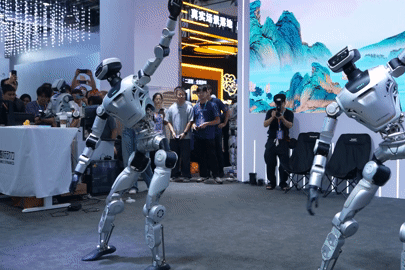An experimental brain implant has shown the ability to read human thoughts, turning words in the head into text.
In an initial test, the Stanford team used a brain-computer interface (BCI) to decode sentences that participants thought but did not say. The device achieved 74% accuracy.

BCI works by connecting the nervous system to a device that decodes brain signals, allowing computers or prosthetic limbs to be controlled with just thoughts. This technology opens up opportunities for people with disabilities to regain independence.
One of the most famous BCIs is Elon Musk's Neuralink, which is currently in clinical trials to test its safety in patients with limited mobility.
The new study, published in the journal Cell, is considered a milestone. “This is the first time we have understood what brain activity looks like when you just think about speaking,” said Stanford researcher Erin Kunz.
The team implanted microelectrodes into the motor cortex, which controls speech, of four test participants. When they tried to speak or simply imagined speaking, the brain signals they recorded showed significant overlap.
Scientists then trained the artificial intelligence (AI) model to decode words that participants only thought in their heads but did not say out loud.
In one test, the brain chip was able to accurately translate up to 74% of imagined sentences, marking a major step forward in efforts to turn thoughts into text.
In another case, the team set a password so that the chip could not “eavesdrop” on thoughts. The system could only translate speech when the participant thought of the password first. The recognition rate was 99% correct, and the password chosen was “Chitty chitty bang bang”.
However, brain chips still need many technical “guardrails” to prevent privacy risks. Experts say that if this technology develops too quickly, it will raise big ethical questions: who controls brain data and where to draw the line between medical assistance and human surveillance.
“This work offers hope that BCI may one day restore the ability to communicate as naturally, fluently, and comfortably as everyday speech,” said study co-author Frank Willett.
(According to Euronews)

Source: https://vietnamnet.vn/chip-nao-doc-y-nghi-chinh-xac-toi-74-phuoc-lanh-hay-ac-mong-2433706.html
























![[Photo] An Phu intersection project connecting Ho Chi Minh City-Long Thanh-Dau Giay expressway behind schedule](https://vphoto.vietnam.vn/thumb/1200x675/vietnam/resource/IMAGE/2025/8/21/1ad80e9dd8944150bb72e6c49ecc7e08)







































![[Photo] Politburo works with the Standing Committee of Hanoi Party Committee and Ho Chi Minh City Party Committee](https://vphoto.vietnam.vn/thumb/402x226/vietnam/resource/IMAGE/2025/8/21/4f3460337a6045e7847d50d38704355d)


































Comment (0)